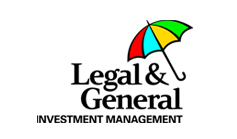
As the New Year fast approaches, many organisations are looking to fund growth in 2010. But where should companies be looking to raise capital? Is AIM the best option? Or perhaps private equity? It is clear the market has changed dramatically over the course of 2009 and leaders need to weigh their options.
Eighteen months ago it looked as if private equity (PE) was the strongest option for companies to raise funds but now as the economy seems to be going into recovery the public markets – AIM and the full list – seem to be opening up.
For many PE has become a less popular option. Kevin Appleton, Chief Executive, Lavendon Group plc says: "Public market listings, whether AIM or full, are likely to remain the most viable source of new fundraising through the coming year, with the reduced appetite of banks for higher levels of leverage, at least in the short term, putting the classic private equity model at something of a disadvantage.”
Since its launch fourteen years ago AIM has been attracting dynamic, growing companies from all over the world. Marcus Stuttard, Head of AIM, London Stock Exchange says: “As we approach 2010, AIM remains the only truly internationally focused growth market in the world, providing firms from a wide range of sectors with access to capital not just at IPO but throughout their life on the market. At a time when debt finance can be unavailable to innovative companies, equity finance will be vital to entrepreneurial companies, the real economy and economic growth."
However, the private equity model is far from dead. Siva Shankar, Corporate Finance Director, SEGRO believes that growing companies may benefit from the shareholders that PE brings. He says: "There is increasing optimism in the business and investment banking community about the prospects for tapping capital markets for equity in 2010. For growing companies, being listed can provide an attractive alternative to private equity, but growing companies also appreciate that private equity shareholders, chosen wisely, can bring advantages to the table with their ‘active expertise’ from a track record of developing the potential of other growing companies.”
Darryl Eales, CEO, Lloyds Development Capital continues: "From my perspective both private equity and AIM potentially allows organisations the headroom and the time to pursue both their chosen growth strategy and to navigate the inevitable ups and downs. The key difference is that private equity also provides proactive support and post investment value add together with an easily accessible source of further funding. Conversely, an AIM listed company may subordinate itself to the vagaries of market sentiment. It is essential that AIM listed management are totally comfortable with having a more public profile (including a more disparate shareholder base) than is the case in private equity. Without question there are sufficient ambitious management teams and growth orientated businesses to allow both AIM and private equity to prosper."
Maybe all that is needed is to bring the private equity culture into listed companies. "As a fully listed plc we have benefited from access to the public markets. We raised capital through a rights issue which has enabled us to proceed with a dramatic turn around of the business. Our ethos is to bring private equity management discipline to a public company," says Rob Woodward, CEO, stv group plc.
As business picks up it looks as if 2010 will be an interesting year for those looking to fund growth, no matter where funds come from.
If you are interested in the topics raised in this week’s Community Update please take a look at our other pieces of Insight including the write-up of the latest AIM CEO Breakfast from September. Also see, Private Equity - The Nature of the Beast.
I hope to see you soon.
Matthew
























